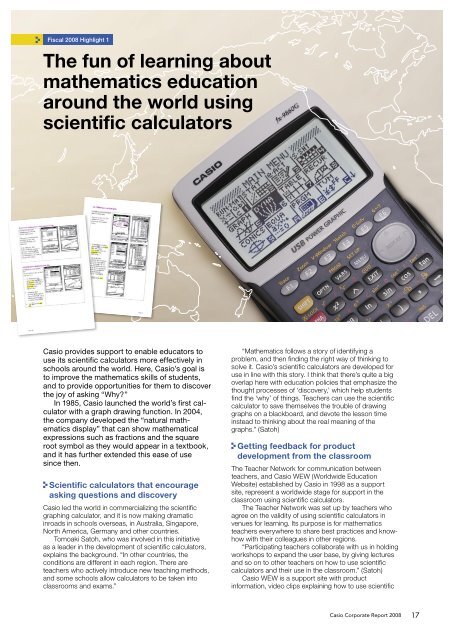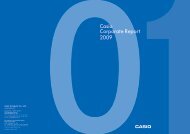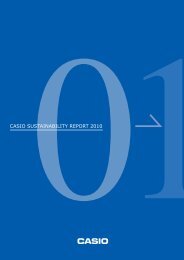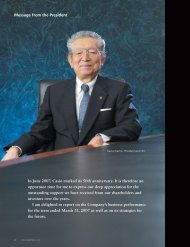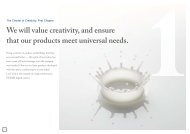Casio Corporate Report 2008
Casio Corporate Report 2008
Casio Corporate Report 2008
- No tags were found...
You also want an ePaper? Increase the reach of your titles
YUMPU automatically turns print PDFs into web optimized ePapers that Google loves.
Fiscal <strong>2008</strong> Highlight 1<br />
The fun of learning about<br />
mathematics education<br />
around the world using<br />
scientific calculators<br />
<strong>Casio</strong> provides support to enable educators to<br />
use its scientific calculators more effectively in<br />
schools around the world. Here, <strong>Casio</strong>’s goal is<br />
to improve the mathematics skills of students,<br />
and to provide opportunities for them to discover<br />
the joy of asking “Why?”<br />
In 1985, <strong>Casio</strong> launched the world’s first calculator<br />
with a graph drawing function. In 2004,<br />
the company developed the “natural mathematics<br />
display” that can show mathematical<br />
expressions such as fractions and the square<br />
root symbol as they would appear in a textbook,<br />
and it has further extended this ease of use<br />
since then.<br />
Scientific calculators that encourage<br />
asking questions and discovery<br />
<strong>Casio</strong> led the world in commercializing the scientific<br />
graphing calculator, and it is now making dramatic<br />
inroads in schools overseas, in Australia, Singapore,<br />
North America, Germany and other countries.<br />
Tomoaki Satoh, who was involved in this initiative<br />
as a leader in the development of scientific calculators,<br />
explains the background. “In other countries, the<br />
conditions are different in each region. There are<br />
teachers who actively introduce new teaching methods,<br />
and some schools allow calculators to be taken into<br />
classrooms and exams.”<br />
“Mathematics follows a story of identifying a<br />
problem, and then finding the right way of thinking to<br />
solve it. <strong>Casio</strong>’s scientific calculators are developed for<br />
use in line with this story. I think that there’s quite a big<br />
overlap here with education policies that emphasize the<br />
thought processes of ‘discovery,’ which help students<br />
find the ‘why’ of things. Teachers can use the scientific<br />
calculator to save themselves the trouble of drawing<br />
graphs on a blackboard, and devote the lesson time<br />
instead to thinking about the real meaning of the<br />
graphs.” (Satoh)<br />
Getting feedback for product<br />
development from the classroom<br />
The Teacher Network for communication between<br />
teachers, and <strong>Casio</strong> WEW (Worldwide Education<br />
Website) established by <strong>Casio</strong> in 1998 as a support<br />
site, represent a worldwide stage for support in the<br />
classroom using scientific calculators.<br />
The Teacher Network was set up by teachers who<br />
agree on the validity of using scientific calculators in<br />
venues for learning. Its purpose is for mathematics<br />
teachers everywhere to share best practices and knowhow<br />
with their colleagues in other regions.<br />
“Participating teachers collaborate with us in holding<br />
workshops to expand the user base, by giving lectures<br />
and so on to other teachers on how to use scientific<br />
calculators and their use in the classroom.” (Satoh)<br />
<strong>Casio</strong> WEW is a support site with product<br />
information, video clips explaining how to use scientific<br />
<strong>Casio</strong> <strong>Corporate</strong> <strong>Report</strong> <strong>2008</strong><br />
17


